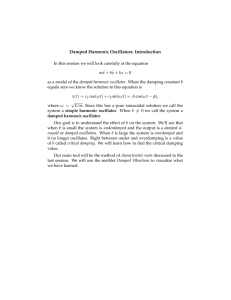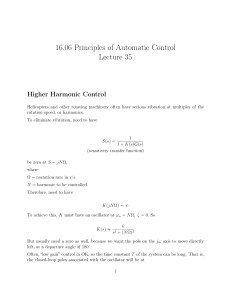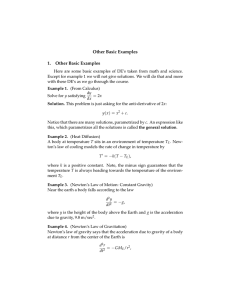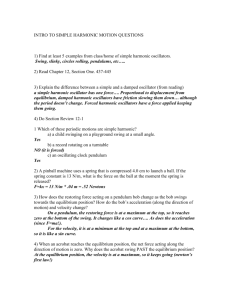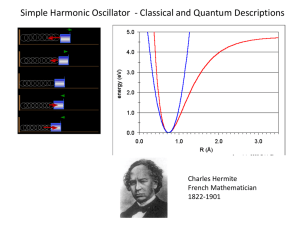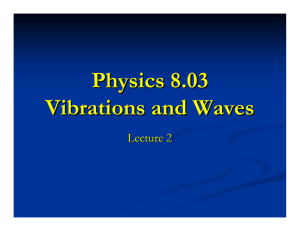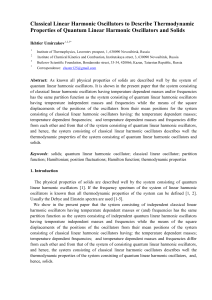.. . + =
advertisement
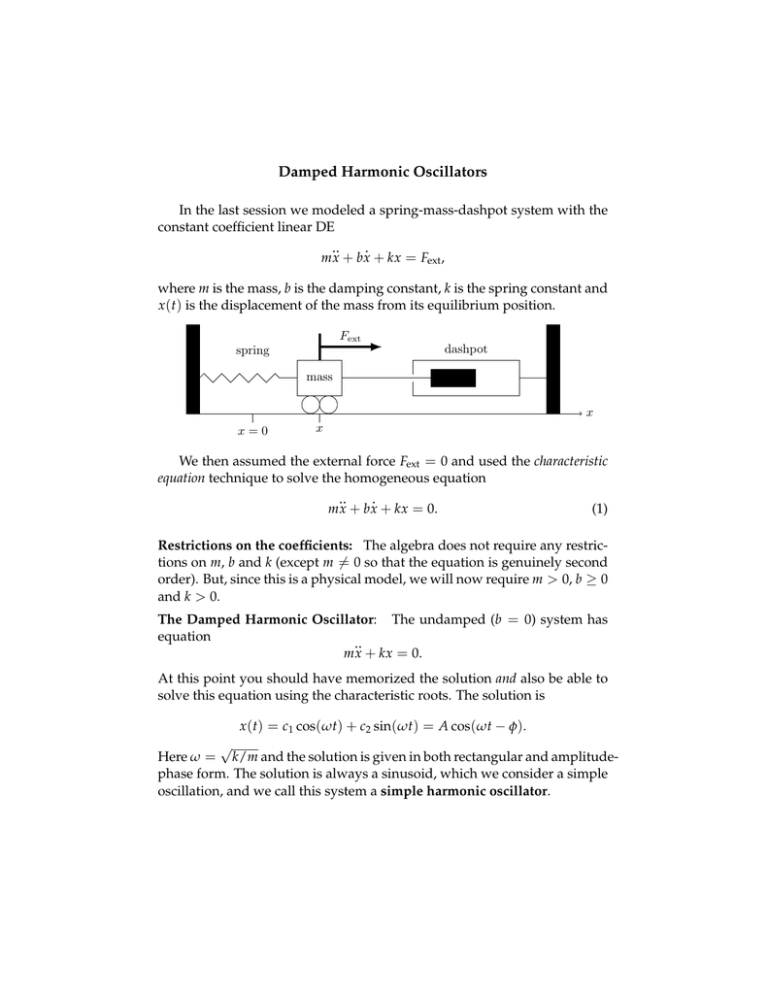
Damped Harmonic Oscillators In the last session we modeled a spring-mass-dashpot system with the constant coefficient linear DE .. . mx + bx + kx = Fext , where m is the mass, b is the damping constant, k is the spring constant and x (t) is the displacement of the mass from its equilibrium position. Fext dashpot spring mass x x=0 x We then assumed the external force Fext = 0 and used the characteristic equation technique to solve the homogeneous equation .. . mx + bx + kx = 0. (1) Restrictions on the coefficients: The algebra does not require any restric­ tions on m, b and k (except m �= 0 so that the equation is genuinely second order). But, since this is a physical model, we will now require m > 0, b ≥ 0 and k > 0. The Damped Harmonic Oscillator: The undamped (b = 0) system has equation .. mx + kx = 0. At this point you should have memorized the solution and also be able to solve this equation using the characteristic roots. The solution is x (t) = c1 cos(ωt) + c2 sin(ωt) = A cos(ωt − φ). √ Here ω = k/m and the solution is given in both rectangular and amplitudephase form. The solution is always a sinusoid, which we consider a simple oscillation, and we call this system a simple harmonic oscillator. Damped Harmonic Oscillators OCW 18.03SC x t Figure 2: The output of a simple harmonic oscillator is a pure sinusoid. When we add damping we call the system in (1) a damped harmonic oscillator. This is a much fancier sounding name than the spring-mass­ dashpot. It emphasizes an important fact about using differential equa­ tions for modeling physical systems. It doesn’t matter whether x measures position or current or some other quantity. Any system modeled by equa­ tion (1) will respond just like the spring-mass-dashpot; that is, all damped harmonic oscillators exhibit similar behavior. We will see an important ex­ ample of this principle whe we study the case of an RLC electrical circuit. 2 MIT OpenCourseWare http://ocw.mit.edu 18.03SC Differential Equations�� Fall 2011 �� For information about citing these materials or our Terms of Use, visit: http://ocw.mit.edu/terms.
